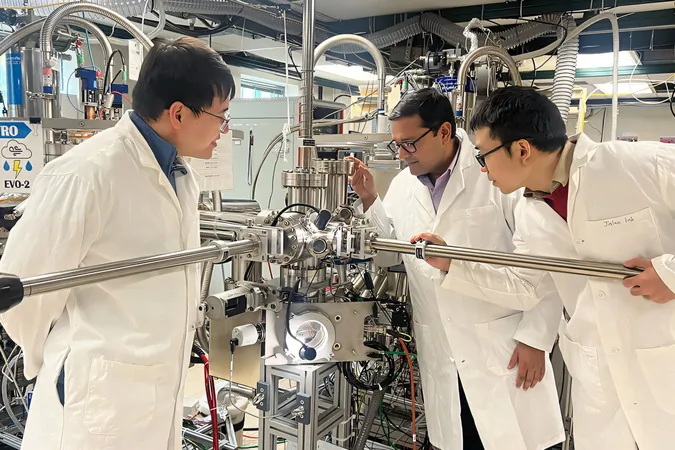
Revolutionizing Healthcare: Can Graphene Technology Combat Antibiotic Resistance?
2024-09-24
Author: Yu
Introduction
Healthcare-associated infections remain a pressing global issue, leading to significant suffering, escalating healthcare costs, and a rising threat of antibiotic resistance. These infections often arise from the use of medical devices such as catheters, hip and knee prostheses, and dental implants, which provide a gateway for bacteria to enter the body.
Innovative Research at Chalmers University of Technology
At the forefront of the battle against these infections is a groundbreaking research team at Chalmers University of Technology. Their innovative approach utilizes graphene—an incredibly thin, two-dimensional material derived from graphite—to tackle both antibiotic resistance and prevent infections in healthcare settings. This remarkable material has properties that allow vertically standing graphene flakes to slice bacteria apart, significantly reducing their ability to attach to surfaces where infections could take hold.
The Potential of Graphene in Medical Applications
Professor Ivan Mijakovic, a key figure in this research, emphasizes the potential of developing a graphene-based antibacterial coating that can be applied to diverse surfaces, including clinical devices and surgical tools. One crucial advantage of this technology is that it circumvents the risk of enhancing antibiotic resistance—a significant concern associated with traditional antimicrobial treatments.
Overcoming Manufacturing Challenges
Despite their promising findings, the researchers faced a significant hurdle: controlling the orientation of the graphene flakes for practical applications on medical devices. Until recently, they could only manipulate graphene in one direction, limited by the manufacturing process. However, a new and exciting breakthrough has emerged.
Breakthrough in Graphene Orientation
The research team has discovered a method to achieve a uniform orientation of graphene flakes, allowing for greater flexibility in the manufacturing of medical devices that boast superior antibacterial properties. Professor Roland Kádár explains that with their new technique, they can embed graphene nanoplates into the surfaces of medical plastics, yielding surfaces that eliminate 99.99% of bacteria attempting to adhere.
The Halbach Array Technique
The innovative orientation technique—the Halbach array—arranges magnets in a specific circular configuration, creating a strong and uniform magnetic field. This method not only aids in aligning the graphene effectively but also holds promise for various applications beyond healthcare, potentially transforming industries such as energy storage (batteries and supercapacitors), sensor technology, and even creating durable, water-resistant packaging materials.
A New Era for Medical Safety
According to Viney Ghai, a researcher involved in the project, this is the first instance of utilizing the Halbach array to orient graphene within a polymer nanocomposite. The successful demonstration of this technique heralds a new era for medical safety, aiming to significantly reduce healthcare-associated infections and alleviate patient suffering while combating antibiotic resistance.
Conclusion and Future Implications
As researchers continue to explore the countless applications of this pioneering technology, the implications are vast. The ability to design and customize nanostructures that mimic the intricate architectures found in nature opens a plethora of possibilities, paving the way for advanced materials that may soon revolutionize multiple sectors.
Stay tuned as this groundbreaking research unfolds—its success could change the landscape of healthcare forever!


 Brasil (PT)
Brasil (PT)
 Canada (EN)
Canada (EN)
 Chile (ES)
Chile (ES)
 España (ES)
España (ES)
 France (FR)
France (FR)
 Hong Kong (EN)
Hong Kong (EN)
 Italia (IT)
Italia (IT)
 日本 (JA)
日本 (JA)
 Magyarország (HU)
Magyarország (HU)
 Norge (NO)
Norge (NO)
 Polska (PL)
Polska (PL)
 Schweiz (DE)
Schweiz (DE)
 Singapore (EN)
Singapore (EN)
 Sverige (SV)
Sverige (SV)
 Suomi (FI)
Suomi (FI)
 Türkiye (TR)
Türkiye (TR)